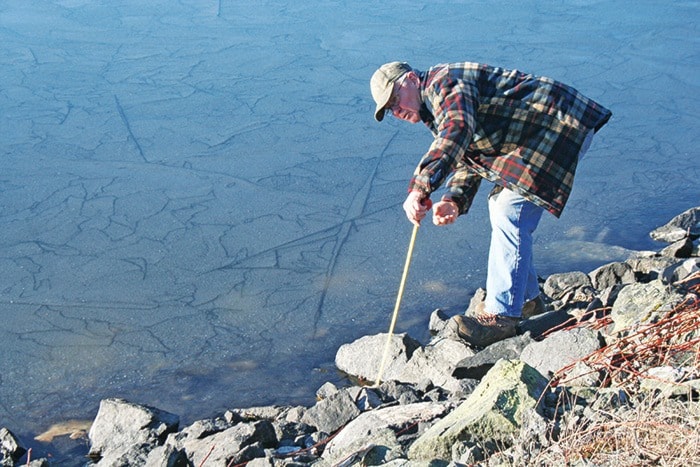Watershed protection is a key piece of the boundary extension proposal by Couverdon Real Estate and the Town of Ladysmith, but what exactly does protection mean? How is Ladysmith owning land around Holland and Stocking lakes going to protect all of the connected waterways and lands? Why can’t water be managed regionally?
Those are just some of the questions the North Oyster Diamond Ratepayers Association and the Ladysmith Sportsmen’s Club are raising about the proposal from Couverdon, the real estate division of Ladysmith. If the proposal, which Ladysmith council recently voted to proceed with and send to the provincial government, goes ahead, Ladysmith would expand city limits to include a 700-acre parcel of land west of the Diamond in exchange for Ladysmith gaining title to about 500 acres of TimberWest land adjacent to Stocking and Holland lakes, the town’s water supply. Couverdon would then seek re-zoning and eventually create a phased development that includes 1,500 housing units.
While they raise many questions, it’s the piece around the watershed that has Dave Judson, president of the Ladysmith Sportsmen’s Club, and Bob Smits, chair of the North Oyster Diamond Ratepayers Association, most concerned.
The Ladysmith Sportsmen’s Club runs the Bush Creek Hatchery, and this was the first December in 23 years that Judson has seen the water so low.
“This year is the first time in December I’ve had low water flow because it’s been an exceptionally dry year,” he said. “We’ve had very little rain. What I am noticing is when I do have rain and snow, a lot of the old shaded, old-growth forested patches that used to hold the snow and let it drip all year are no longer there, so when I do get any water, I’m getting water at quite a force. Instead of going through the timber, it’s just pouring. There’s no retention. It has nothing to do with the way they’re logging; they’re totally logging to the Forest Practice Code and the Private Managed Forest Land Act and all that stuff, so there’s nothing against that, but I’m just noticing the effects of it, especially with a dry year.”
As the Town moves toward ownership of the watershed, Judson believes Ladysmith has a water storage problem more than anything. And with the changing landscape, less mature timber means less natural filtration.
“What I always say is we don’t have a water shortage — we have a water storage shortage,” he said. “When that snow on Mount Hall melts, it will come down in like two weeks, where years ago, it used to be in the timber and drip, drip, drip.”
Judson also feels that the issue of watershed access is important, and it all comes down to education and awareness.
Smits feels strongly that the watershed should be managed regionally, not just by each individual municipality, because the waterways and lands on Vancouver Island are so connected.
“The thing is it’s all connected,” said Smits. “Everything’s connected, and we should be dealing with water on a much broader basis.”
Judson’s father, Jack, agrees the watershed is far more than the land around the lakes.
“The old argument of protection of the watershed, well, if the town owns this around here, that’s fine and dandy, but there’s some watershed up there where they’re logging,” he said. “All that drains into this creek. It’s just a word.”
“You can put a fence around it, but the best you can do is say you’re protecting the reservoir,” agreed Smits. “You are semi-protecting it.”
Judson argues that it’s all valuable watershed, not just the drinking water, and it all needs to be co-operatively managed.
Judson is concerned that “watershed protection” is a very grey area.
“I want to know what protecting the watershed means,” he said. “What does it mean, buying it all? There’s no way we can own it all; all of Vancouver Island is a watershed, all water systems need to protected and conserved.”
Judson is in favour of slowing down the process between Ladysmith and Couverdon to do more studies.
“I don’t think they need to go to the effort of buying and locking the watershed,” said Judson. “Some efforts to educate the public and co-operatively manage it should be the first step. Let’s do some studies, studies on the water effects for five years, and slow those developments down a bit and see if we have enough water, or let’s find out if we need a bigger reservoir prior to doing the development.”
Smits agrees, noting Couverdon has said development would take more than 20 years.
